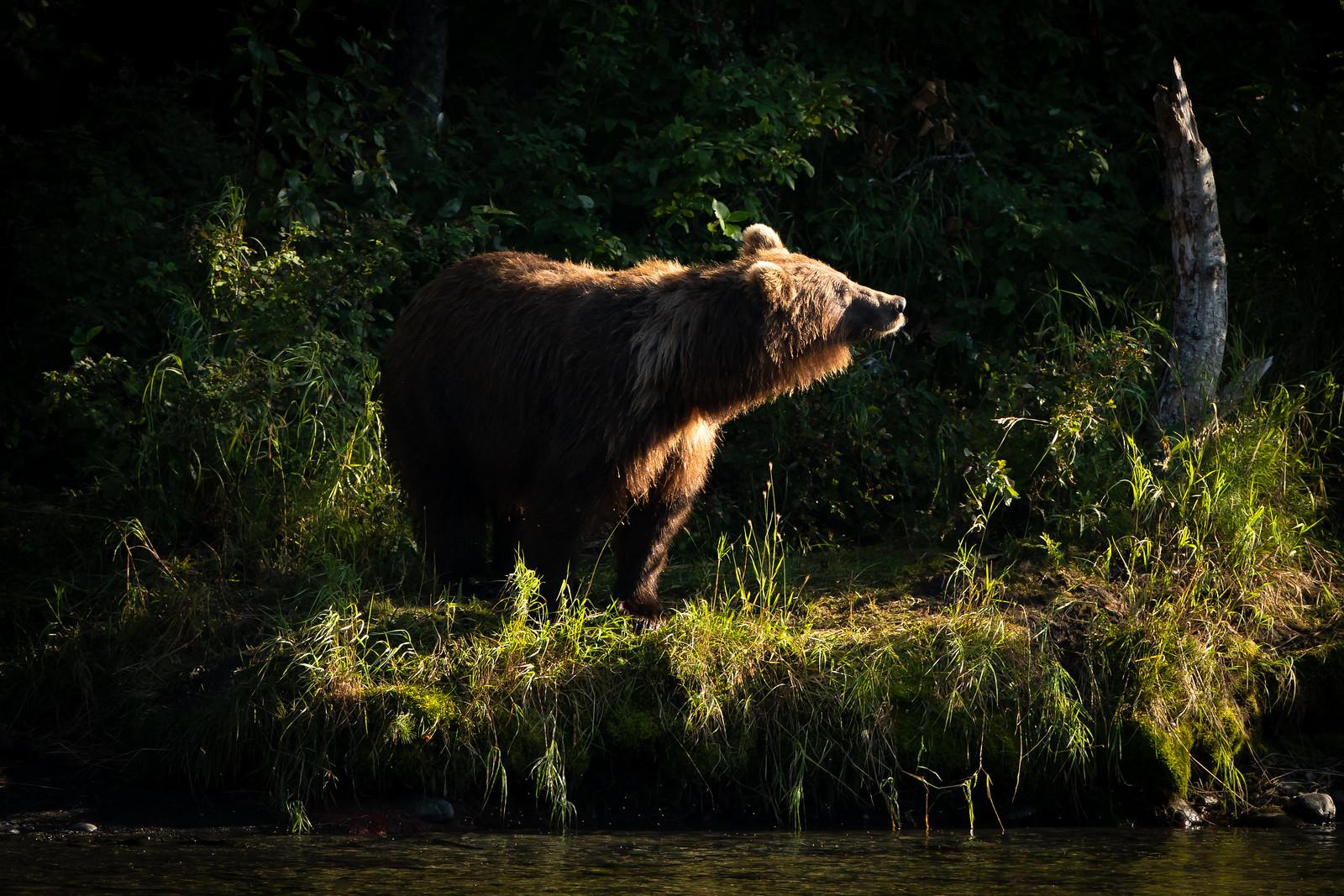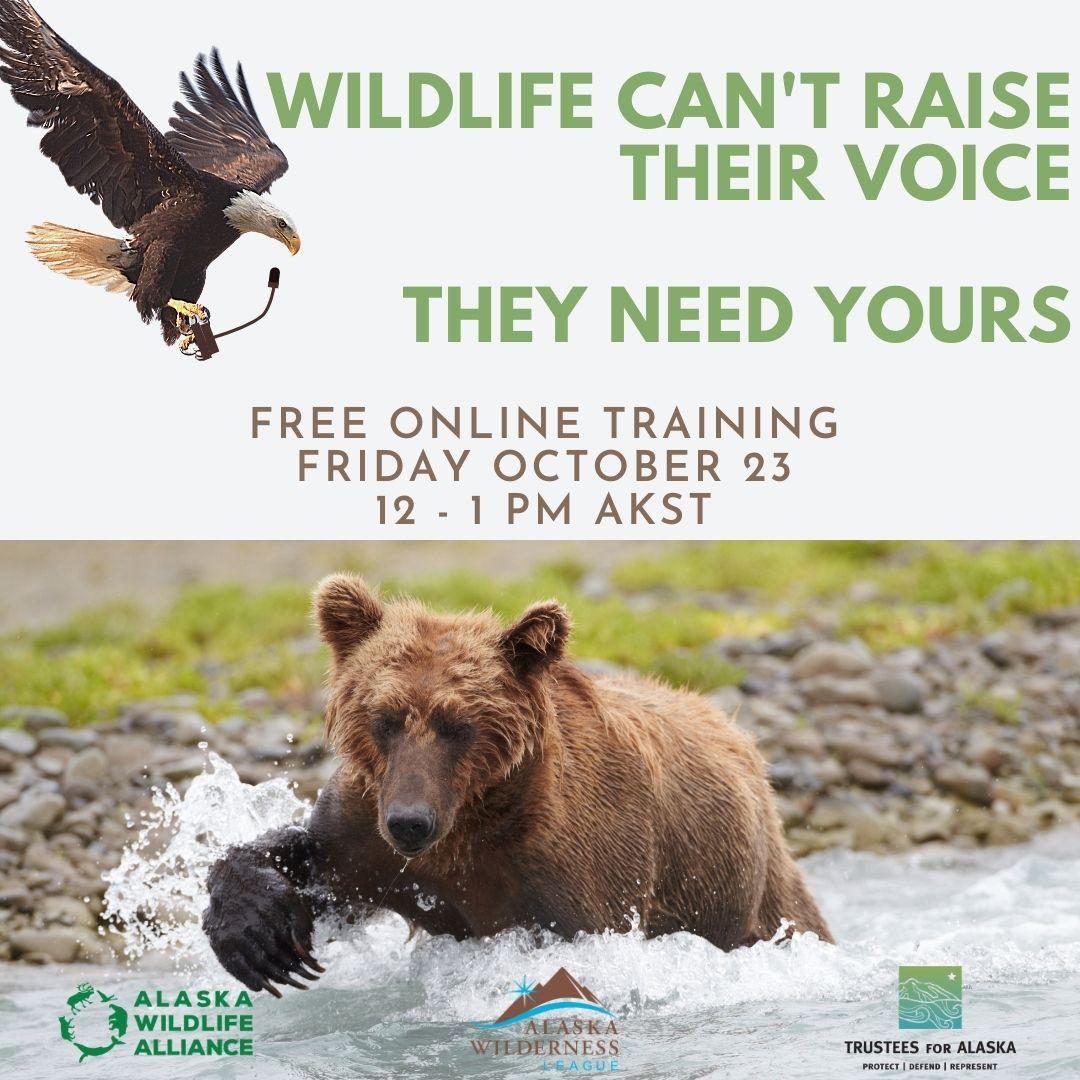
Speak out for wildlife in the Kenai Refuge
In June 2020, the U.S. Fish and Wildlife Service proposed allowing manipulative and dangerous hunting practices, such as baiting brown bears, on the Kenai National Wildlife Refuge. This week you can speak out for wildlife.
The proposed rule would also allow trapping of wolves, lynx and other animals dangerously close to popular trails, campgrounds and recreation areas used by people with children and pets.

Not only does the proposed rule threaten wildlife diversity and local users, it also undermines the purpose of the refuge system itself, and the health of public lands generally.
You can speak out for wildlife and against this proposal during a virtual public hearing at 4 pm on Oct. 26. You must pre-register to join the meeting.
If you want to get tips on how to write comments or testify at public hearings, join us and folks from the Alaska Wildlife Alliance and the Alaska Wilderness League in a short workshop that will give you step-by-step training in how to use your voice for Alaska’s wildlife. The session takes place at noon on Oct. 23.
The truth about Kenai brown bears
The Kenai Refuge is heavily used by Alaskans every year, many who boat, hike, fish, sight-see, and recreate as a way to experience its diverse places and array of wildlife.
USFWS has never allowed hunters to shoot brown bear over bait within the Kenai Refuge.
Kenai brown bears are a genetically distinct population isolated from mainland Alaska; they are already struggling because of increased mortality on state lands and human expansion on the Kenai Peninsula.
Allowing brown bear baiting on the Refuge will place the already vulnerable Kenai brown bears at further risk.
The federal proposal to change these Kenai Refuge regulations is complicit with the Alaska Board of Game’s attempt to keep predator populations artificially low to try to boost the number of game animals like moose—an unscientific approach that conflicts with federal mandates to maintain wildlife diversity and the fundamental purpose of these public lands.

USFWS should maintain its decades-long prohibition of baiting brown bears in the Kenai Refuge.
Trapping without permits and other bad ideas
USFWS’s proposed rule would also abolish the requirement that trappers obtain a federal permit from the Refuge. Far from the deletion of a mere procedural requirement, eliminating the federal permit would have real consequences.
For example, without the federal permit, people could put traps within a mile of campgrounds and trailheads, putting other visitors at increased risk of harm when encountering them. This is a huge concern for Kenai Refuge users, including people with dogs.
Also, trappers would not need to periodically check traps or identify the location of traps and snares. Trappers could use currently-prohibited methods that are likely to increase the trapping of non-target species. They could also use steel leg-hold traps with teeth, spikes or serrated jaws. Eliminating the federal permit also hamstrings Refuge management, as trappers would not have to report how many animals they have trapped to Refuge personnel.
These changes place both human health and wildlife at risk, and should be rejected. If you’re interested in general information about trapping in the Kenai Peninsula, check out the Alaska Wildlife Alliance Wildlife Wednesday trapping 101 presentation at 7 pm on Oct. 21.


